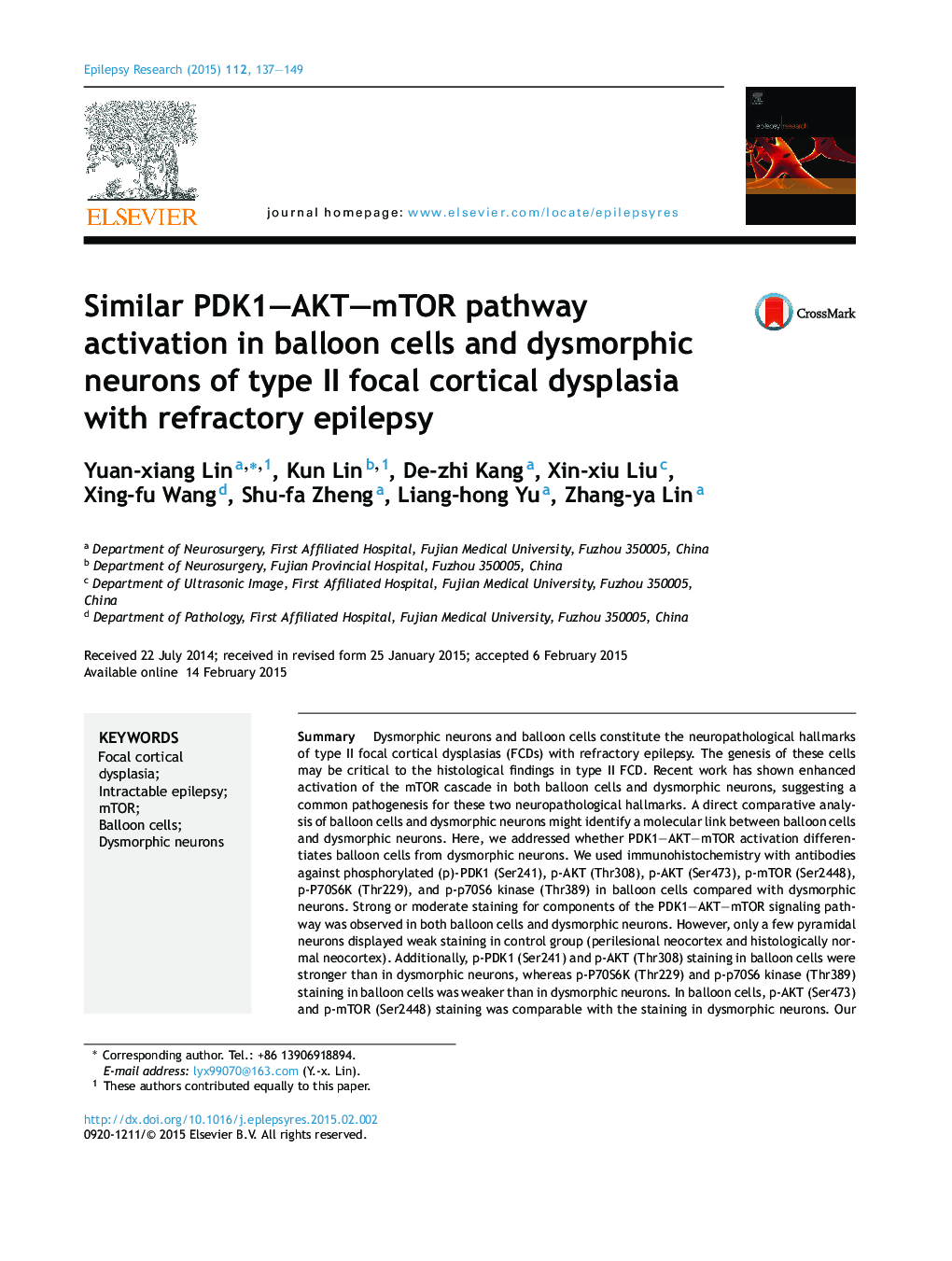| Article ID | Journal | Published Year | Pages | File Type |
|---|---|---|---|---|
| 3051982 | Epilepsy Research | 2015 | 13 Pages |
•PDK1–AKT–mTOR cascade was abnormally activated in DNs and BCs in FCDII.•PDK1–AKT–mTOR activation may play important roles in the pathogenesis of type II FCD.•DNs and BCs may have a common pathogenesis, originate from a somatic gene mutation.•This gene mutation could lead to PDK1–AKT–mTOR abnormal activation.
SummaryDysmorphic neurons and balloon cells constitute the neuropathological hallmarks of type II focal cortical dysplasias (FCDs) with refractory epilepsy. The genesis of these cells may be critical to the histological findings in type II FCD. Recent work has shown enhanced activation of the mTOR cascade in both balloon cells and dysmorphic neurons, suggesting a common pathogenesis for these two neuropathological hallmarks. A direct comparative analysis of balloon cells and dysmorphic neurons might identify a molecular link between balloon cells and dysmorphic neurons. Here, we addressed whether PDK1–AKT–mTOR activation differentiates balloon cells from dysmorphic neurons. We used immunohistochemistry with antibodies against phosphorylated (p)-PDK1 (Ser241), p-AKT (Thr308), p-AKT (Ser473), p-mTOR (Ser2448), p-P70S6K (Thr229), and p-p70S6 kinase (Thr389) in balloon cells compared with dysmorphic neurons. Strong or moderate staining for components of the PDK1–AKT–mTOR signaling pathway was observed in both balloon cells and dysmorphic neurons. However, only a few pyramidal neurons displayed weak staining in control group (perilesional neocortex and histologically normal neocortex). Additionally, p-PDK1 (Ser241) and p-AKT (Thr308) staining in balloon cells were stronger than in dysmorphic neurons, whereas p-P70S6K (Thr229) and p-p70S6 kinase (Thr389) staining in balloon cells was weaker than in dysmorphic neurons. In balloon cells, p-AKT (Ser473) and p-mTOR (Ser2448) staining was comparable with the staining in dysmorphic neurons. Our data support the previously suggested pathogenic relationship between balloon cells and dysmorphic neurons concerning activation of the PDK1–AKT–mTOR, which may play important roles in the pathogenesis of type II FCD. Differential expression of some components of the PDK1–AKT–mTOR pathway between balloon cells and dysmorphic neurons may result from cell-specific gene expression.
